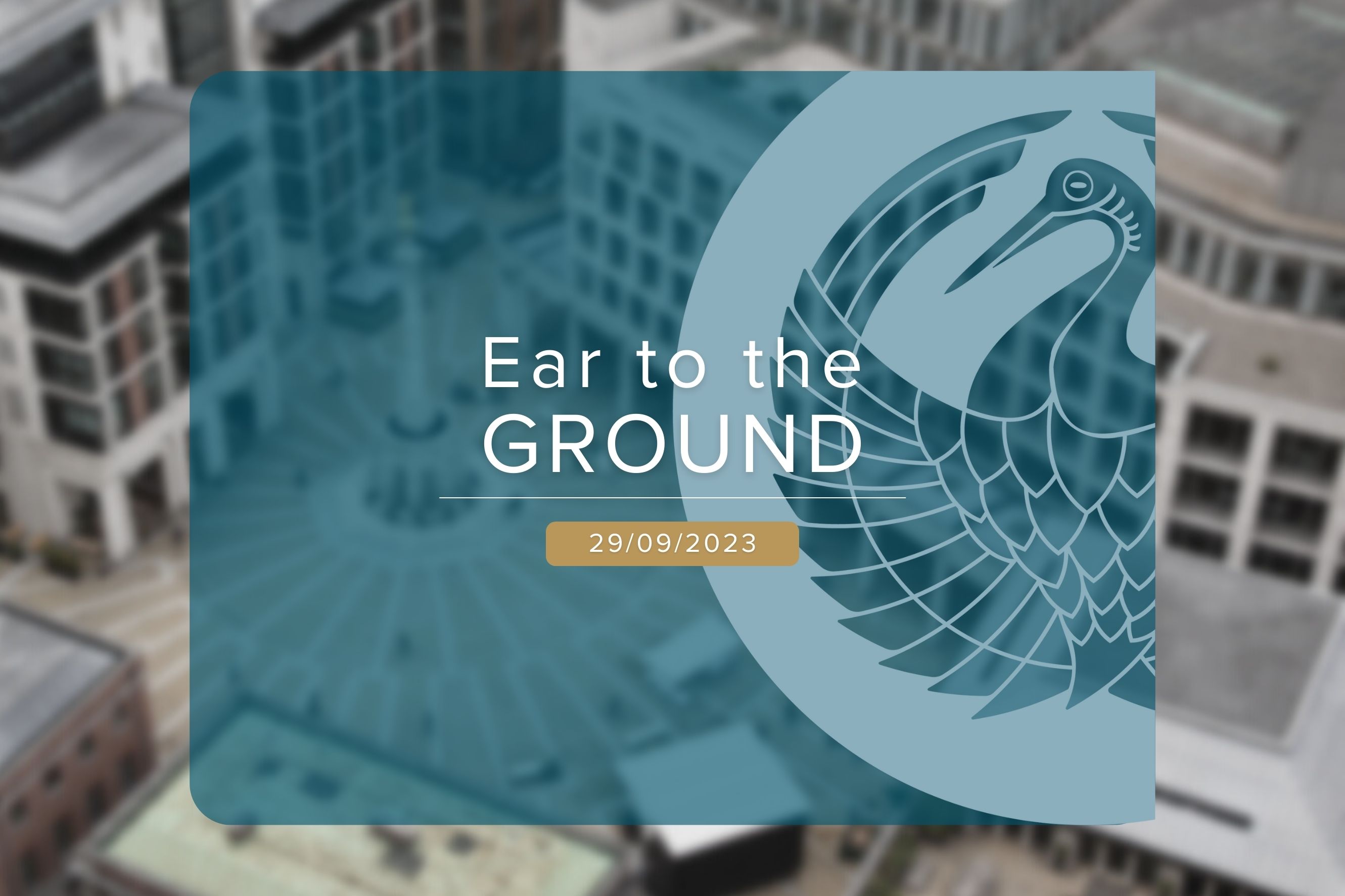Ear to the ground
29 September 2023

Eyes were focussed on the latest core PCE (personal consumption expenditures) data from the US, a figure seen as the preferred measure of inflation for the US Federal Reserve. Whilst we clearly still have positive inflation in the country, it at least continues to move in the right direction. This measure rose by 3.9% annually to August. This was in line with market expectations. This figure represented the lowest reading since May 2021.
The Federal Reserve also released their Summary of Economic Projections, which noted that the PCE is expected to fall faster this year than previously thought. They now foresee core inflation at 3.7% this year, cooling to 2.6% in 2024. Heading in the right direction therefore, but still not back at the 2% target level.
Despite this, the US 10 year Treasury yield continued to rise. At just under 4.63%, it is now at a level not seen since 2007. We are still not near the high of the last 25 years, which saw this bond yield north of 5%, and indeed north of 6% in 2000. Looking even further out, the current yield is well below that seen in the early to mid-1980’s. However, we have seen a sharp acceleration from the sub 1% level seen back in 2020 all the same.
Economic data was light from the UK last week. Despite the Bank of England leaving interest rates on hold at their last meeting, pressure remained on government bond yields. The mortgage market therefore remains in a difficult place for borrowers and therefore housing affordability. As housing prices have increased, so therefore has the deposit which a buyer would expect to pay over. This, however, is a longer term phenomena. What has been a short term issue however is the increase in mortgage monthly payments. Research from JP Morgan shows that the cost of buying the average house in the UK with a 10% deposit, in terms of monthly mortgage payments, has roughly doubled since 2020, based on a 2 year fixed rate term. This potentially makes for a nervous time for consumers.
There was good news on the inflation front from the eurozone regarding inflation there. The September flash reading for core inflation fell to 4.5%. Whilst this is still comfortably above the 2% target, it is lower than the previous reading of 5.3% and came in below the consensus forecast of 4.8%. This is clearly good news for the ECB, but with uncertainty remaining as to whether the US still needs one more hike, weakness is likely to be seen in the Euro currency.
This article is for information purposes only and should not be construed as advice. We strongly suggest you seek independent financial advice prior to taking any course of action.
The value of this investment can fall as well as rise and investors may get back less than they originally invested. Past performance is not necessarily a guide to future performance.
The Fund is suitable for investors who are seeking to achieve long term capital growth.
The tax treatment of investments depends on the individual circumstances of each client and may be subject to change in the future. The above is in relation to a UK domiciled investor only and would be different for those domiciled outside the UK. We strongly suggest you seek independent tax advice prior to taking any course of action.
Subscribe Today
To receive exclusive fund notifications straight into your inbox, please complete this form.